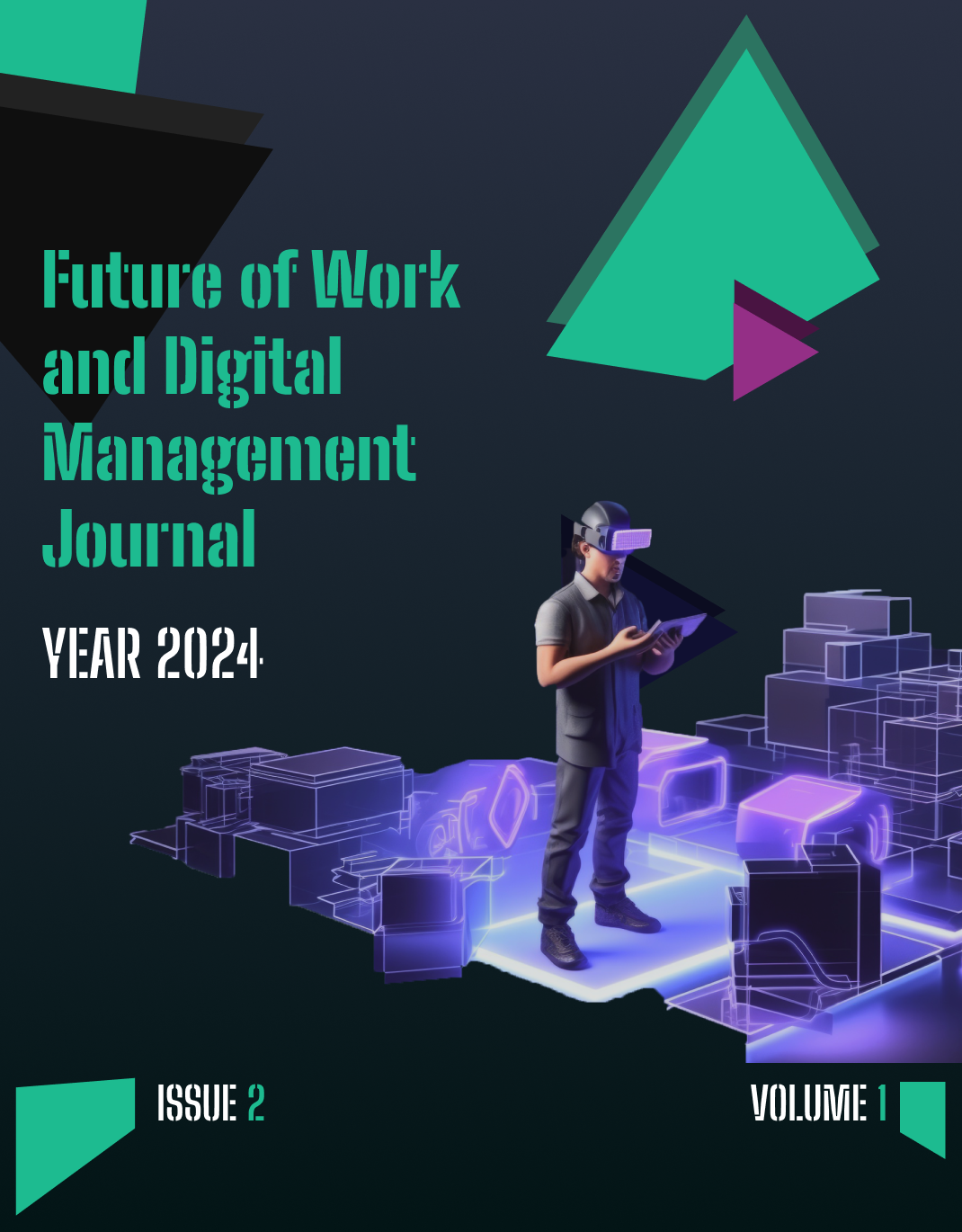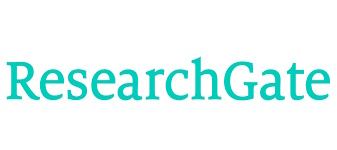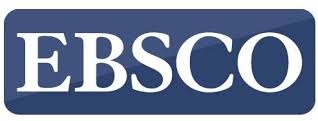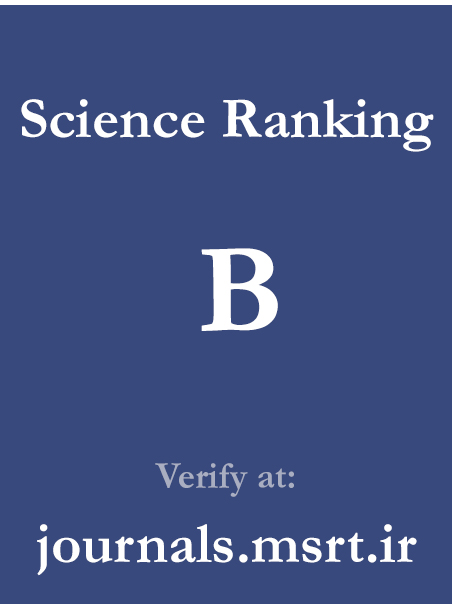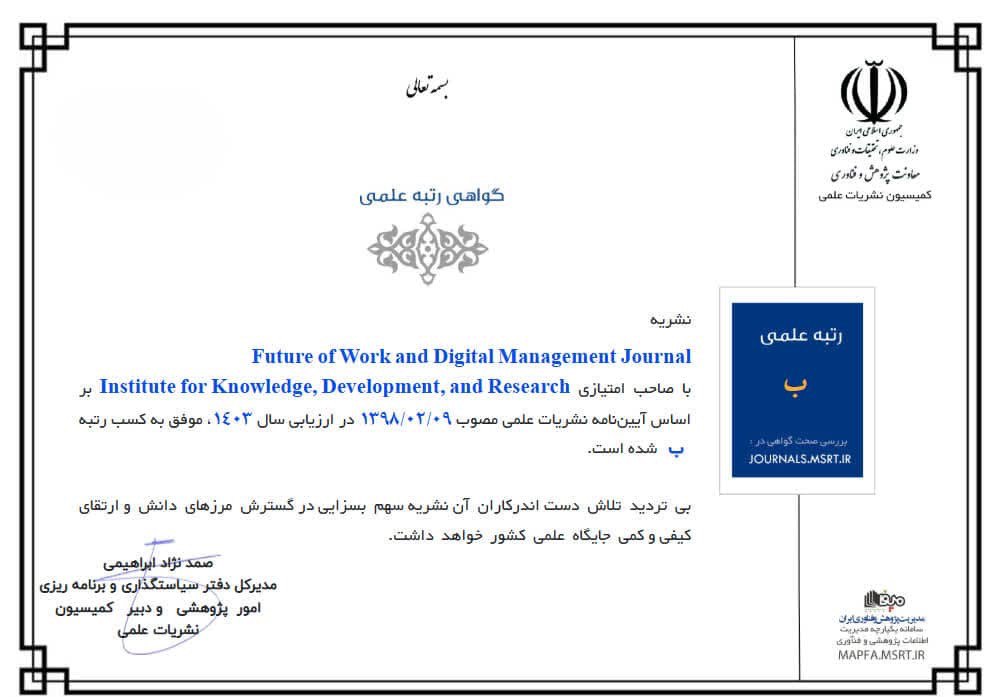Technostress and Remote Workload as Predictors of Job Burnout
Keywords:
Job burnout, Technostress, Remote workload, Remote work, Digital strain, Employee well-beingAbstract
This study aimed to examine the predictive roles of technostress and remote workload on job burnout among remote employees in Mexico. A correlational descriptive research design was employed with a sample of 380 remote workers selected based on the Krejcie and Morgan table. Standardized tools were used to measure the variables: the Maslach Burnout Inventory – General Survey (MBI-GS) for job burnout, the Technostress Creators Scale for technostress, and the Remote Work Overload Scale for remote workload. Data were analyzed using SPSS version 27. Pearson correlation coefficients were calculated to assess the bivariate relationships between the dependent and independent variables. Multiple linear regression analysis was then conducted to evaluate the combined predictive capacity of technostress and remote workload on job burnout. The results indicated that both technostress (r = .62, p < .01) and remote workload (r = .58, p < .01) had significant positive correlations with job burnout. The multiple regression model was significant, F(2, 377) = 123.36, p < .001, explaining 47% of the variance in burnout (R² = .47). Technostress (B = 0.41, β = .46, p < .001) and remote workload (B = 0.67, β = .33, p < .001) were both significant positive predictors of job burnout, with technostress having a stronger effect. The findings confirm that both technostress and remote workload significantly contribute to job burnout among remote workers, with technostress emerging as the stronger predictor. These results emphasize the need for organizations to implement strategies that reduce digital strain and manage workload effectively in remote work environments to prevent employee burnout.
Downloads
References
[1] M. Jiang and M.-L. Gu, "Influence Path of Work-Family Conflict on Primary Care Physicians’ Resignation Intention: Data From a Chinese Cross-Sectional Survey," Work, vol. 80, no. 1, pp. 352-366, 2025, doi: 10.3233/wor-230375.
[2] G.-I. Kim and K. H. Park, "The Narrative on the Experience of Vicarious Trauma Experienced by Crime Victim Counselors," Korean Youth Counseling Association, vol. 5, no. 2, pp. 151-174, 2024, doi: 10.51613/jkyca.2024.5.2.151.
[3] Y. Wang, Q. Xia, H. Yue, and W. Teng, "Chinese Rural Kindergarten Teachers’ Work–Family Conflict and Their Turnover Intention: The Role of Emotional Exhaustion and Professional Identity," Behavioral Sciences, vol. 14, no. 7, p. 597, 2024, doi: 10.3390/bs14070597.
[4] M. v. Zyl-Cillié, J. H. Bührmann, A. J. Blignaut, D. Demirtas, and S. K. Coetzee, "A Machine Learning Model to Predict the Risk Factors Causing Feelings of Burnout and Emotional Exhaustion Amongst Nursing Staff in South Africa," BMC Health Services Research, vol. 24, no. 1, 2024, doi: 10.1186/s12913-024-12184-5.
[5] M. Tarafdar and S. R. Gordon, "Understanding the influence of information systems competencies on process innovation: A resource-based view," The Journal of Strategic Information Systems, vol. 16, no. 4, pp. 353-372, 2007, doi: 10.1016/j.jsis.2007.09.001.
[6] V. Jain, "Organisation Advocacy While Experiencing a Career Plateau: The Mediating Moderating Role of Emotional Exhaustion and Organisation Embeddedness," International Journal of Economics Finance and Management Sciences, vol. 12, no. 6, pp. 372-380, 2024, doi: 10.11648/j.ijefm.20241206.13.
[7] D. Kim, S.-M. Park, and J. Seo, "A Study on the Determinants of Burnout Among Firefighters Using Decision Tree Analysis," National Association of Korean Local Government Studies, vol. 26, no. 2, pp. 63-89, 2024, doi: 10.38134/klgr.2024.26.2.063.
[8] J. Yin, Y. Ni, Y. Fan, and Y. H. Chen, "Navigating Unpleasant Interactions: The Influence of Customer Mistreatment on Hospitality Employee Responses Employing Mindfulness as a Moderator," Sustainability, vol. 15, no. 19, p. 14288, 2023, doi: 10.3390/su151914288.
[9] P. Zhang, "“What Do I Feel? Who Am I?”: Exploring Secondary School EFL Student Teachers’ Emotion Labor in Identity Construction From a Post-Structuralist Perspective," English Language Teaching and Linguistics Studies, vol. 5, no. 4, p. p235, 2023, doi: 10.22158/eltls.v5n4p235.
[10] Y. Wang, "A Study on the Effect of Emotional Exhaustion on Service Initiative Behavior of Hotel Front-Line Employees--The moderating effect of Organizational Identity," pp. 202-211, 2023, doi: 10.2991/978-94-6463-298-9_22.
[11] D. Reich, P. Mráz, O. Šída, and W. Gutermann, "A Long History in a Short Note—identity and Typification of the Name Hippion Obtusifolium F.W. Schmidt, and Synonymy of the Species Gentianella Obtusifolia (Gentianaceae)," Phytotaxa, vol. 598, no. 2, pp. 157-166, 2023, doi: 10.11646/phytotaxa.598.2.5.
[12] C. Santiago-Torner, J. A. C. Marfil, and E. Tarrats-Pons, "Relationship Between E-Ethical Leadership and Emotional Exhaustion: A Moderated Mediation Model," 2024, doi: 10.20944/preprints202408.0722.v1.
[13] Z. Altınay and B. Bicentürk, "Constructing Sustainable Learning Ecology to Overcome Burnout of Teachers: Perspective of Organizational Identity and Locus of Control," Sustainability, vol. 15, no. 24, p. 16930, 2023, doi: 10.3390/su152416930.
[14] S. Y. Ntim, J. Qin, C. O. Antwi, M. O. Aboagye, S. Chen, and E. T. Mensah, "“I-Just-Wanna-Get-By” Hurts Teachers and Their Work: Linking Preschool Teacher Identity to Work Withdrawals in an Emerging Economy," Current Psychology, vol. 43, no. 3, pp. 2783-2798, 2023, doi: 10.1007/s12144-023-04494-4.
[15] W. Jian-ming, T. Vo‐Thanh, Y.-H. Liu, V. T. Dang, and N. Nguyen, "Information Confusion as a Driver Of consumer Switching Intention On social Commerce Platforms: A multi-Method Quantitative Approach," Information Technology and People, vol. 37, no. 1, pp. 171-200, 2023, doi: 10.1108/itp-04-2022-0284.
[16] C. Liao, Z. Li, and L. Huang, "How Does Psychological Contract Breach Affect Employee Silence? A Moderated Mediation Model," Sage Open, vol. 14, no. 4, 2024, doi: 10.1177/21582440241299601.
[17] G. Zhang, K. Peng, and S. Chen, "The Double‐edged Sword Effect of High‐performance Work Systems: Investigating When and Why High‐performance Work Systems Promote Versus Inhibit Employee Organizational Citizenship Behaviors," Asia Pacific Journal of Human Resources, vol. 61, no. 1, pp. 168-195, 2022, doi: 10.1111/1744-7941.12326.
[18] M. K. M. Balwi, D. W. Yee, K. Thukiman, and A. Haziqah, "The Relationship Between Workload and Burnout Among the Medical Staff in Hospital," Sains Humanika, vol. 13, no. 2-2, 2021, doi: 10.11113/sh.v13n2-2.1891.
[19] G. Chen and X. Sui, "How Do CEOs' General Managerial Skills Affect Firms' Digital Transformation? The Contingent Roles of Performance Feedback and Financial Slack," Journal of Enterprise Information Management, 2025, doi: 10.1108/jeim-10-2024-0598.
[20] T. O. B. Sadewo and N. M. Shinta, "A Study on Job Demands-Resources in the Public Sector," Jurnal Organisasi Dan Manajemen, vol. 20, no. 1, pp. 97-113, 2024, doi: 10.33830/jom.v20i1.6160.2024.
[21] N. M. D. Dinanda and I. G. A. M. Dewi, "Burnout of Public Hospital Nurse: Does Work Stress and Workload Cause Prolonged Pysical, Emotional, and Mental Exaustion," Ijmre-Itb, vol. 2, no. 4, pp. 371-391, 2024, doi: 10.54066/ijmre-itb.v2i4.2436.
[22] I. K. Mustika, I. M. A. R. Perbawa, and I. W. B. Artha, "Pengaruh Beban Kerja Dan Work Life Balance Terhadap Kinerja Pegawai Melalui Job Burnout Pada Biro SDM Polda Bali," Journal of Applied Management Studies, vol. 5, no. 1, pp. 39-50, 2023, doi: 10.51713/jamms.v5i1.104.
[23] V. Makizadeh, T. Bagherzadeh, M. Nekooeezadeh, and E. Shahabi, "Study of the Effect of COVID-19 on Nurses’ Job Burnout and Its Consequences," Journal of Kerman University of Medical Sciences, vol. 30, no. 2, pp. 72-79, 2023, doi: 10.34172/jkmu.2023.12.
[24] M. F. Busti, Yulihasri, and H. A. Rivai, "Pengaruh Beban Kerja Dan Resiliensi Terhadap Job Burnout Dengan Stres Kerja Sebagai Variabel Mediasi," Jurnal Informatika Ekonomi Bisnis, pp. 632-640, 2023, doi: 10.37034/infeb.v5i2.566.
[25] G. Ni, X. Miao, L. Li, H. Li, S. Wang, and M. Niu, "Can Professionalization Alleviate Job Burnout in Construction Workers in China? A Multivariable Mediating Model," International Journal of Environmental Research and Public Health, vol. 19, no. 21, p. 13879, 2022, doi: 10.3390/ijerph192113879.
[26] N. C. Nyamugoro, L. O. Odiemo, and G. Wango, "Fervently Optimistic: Teachers Emotional Exhaustion and a Balance Between Workload and Job Satisfaction Among High School Teachers," International Journal of Learning and Development, vol. 13, no. 3, p. 19, 2023, doi: 10.5296/ijld.v13i3.21210.
[27] P. Galanis et al., "Workload Increases Nurses' Quiet Quitting, Turnover Intention, and Job Burnout: Evidence From Greece," Aims Public Health, vol. 12, no. 1, pp. 44-55, 2025, doi: 10.3934/publichealth.2025004.
[28] A. Nugroho, S. Mujanah, and I. D. K. R. Ardiana, "The Effect of Workload, Distributive Injustice and Job Burnout on Employee Performance With Quiet Quitting as an Intervening Variable in Employees at Public Works and Highways Department of East Java Province," Marginal Journal of Management Accounting General Finance and International Economic Issues, vol. 4, no. 2, pp. 321-338, 2025, doi: 10.55047/marginal.v4i2.1610.
[29] O. KİNter and Y. Katı, "The Mediation Effect of Job Stress and Burnout on the Relationship Between Workload and Turnover Intention: An Application in the Healthcare Sector," Cumhuriyet Üniversitesi İktisadi Ve İdari Bilimler Dergisi, vol. 23, no. 4, pp. 852-863, 2022, doi: 10.37880/cumuiibf.1090558.
[30] Y. Tong and M. Prompanyo, "The Moderating Effect of Moral Identity on the Relationship Between Emotional Exhaustion and Budget Slack," Open Journal of Accounting, vol. 10, no. 03, pp. 93-104, 2021, doi: 10.4236/ojacct.2021.103008.
[31] X. Jia, S. Liao, and W. Yin, "Job Insecurity, Emotional Exhaustion, and Workplace Deviance: The Role of Corporate Social Responsibility," Frontiers in Public Health, vol. 10, 2022, doi: 10.3389/fpubh.2022.1000628.
[32] B. Pu, S. Ji, and W. Sang, "Customer Incivility and Employees’ Turnover Intention in China’s Hotel: A Chain Mediating Model," 2021, doi: 10.21203/rs.3.rs-823478/v1.
[33] C.-E. Liu, X. Yuan, C. Hu, T. Liu, Y. Chen, and W. He, "Work-Related Identity Discrepancy and Counterproductive Work Behavior: The Role of Emotional Exhaustion and Supervisor Incivility," International Journal of Environmental Research and Public Health, vol. 17, no. 16, p. 5747, 2020, doi: 10.3390/ijerph17165747.
[34] C. Phillips, "Relationships Between Workload Perception, Burnout, and Intent to Leave Among Medical–surgical Nurses," International Journal of Evidence-Based Healthcare, vol. 18, no. 2, pp. 265-273, 2020, doi: 10.1097/xeb.0000000000000220.
[35] C. Liang and J. Chen, "Analysis on Job Burnout Level and Influencing Factors of Young Employees in Guangdong Express Delivery Industry," 2020, doi: 10.2991/aebmr.k.200908.039.
[36] V. Fajrin, A. Subyantoro, and A. Pujiharjanto, "The Effect of Job Redesign and Workload on Job Satisfaction of Medical Employees With Burnout as a Mediation Variable at the Banjarsari Health Center, Temanggung Regency," JuBIR, vol. 1, no. 2, p. 131, 2022, doi: 10.31315/jubir.v1i2.8039.
[37] G. Sadeghzade, S. Rahmati, F. Sadeghi, A. M. Bolbanabad, and E. Darvishi, "Assessment of Mental Workload and Job Burnout of Medical Employees During the COVID-19 Pandemic in Iran," Journal of Ergonomics, vol. 9, no. 2, pp. 1-16, 2021, doi: 10.30699/jergon.9.2.1.
[38] R. Juniar and A. Arijanto, "Pengaruh Beban Kerja Dan Stres Kerja Yang Dimediasi Oleh Burnout Terhadap Perilaku Cyberloafing Di Departement R&D PT. Kalbe Farma TBK," Jampk, vol. 2, no. 1, p. 19, 2024, doi: 10.47134/jampk.v2i1.408.
[39] A. M. Rodríguez-López, S. R. Valdehita, and E. M. Díaz-Ramiro, "Influence of the CoViD-19 Pandemic on Mental Workload and Burnout of Fashion Retailing Workers in Spain," International Journal of Environmental Research and Public Health, vol. 18, no. 3, p. 983, 2021, doi: 10.3390/ijerph18030983.
[40] A. Andrianto and E. Priyono, "Determinants of Burnout and Job Satisfaction as Mediating Variables in Employees of PT. Multi International Logistic," Journal of Economics Finance and Management Studies, vol. 07, no. 07, 2024, doi: 10.47191/jefms/v7-i7-95.
[41] B. N. Lynner, R. Stoa, G. G. Fisher, E. D. Pozo, and R. Lizerbram, "Feel the Burn, Heal the Burn: Job Crafting and Burnout Among Occupational Therapy Professionals," American Journal of Occupational Therapy, vol. 79, no. 1, 2024, doi: 10.5014/ajot.2025.050731.
[42] T. Johnson, S. Shamroukh, and M. Newman, "Investigating Factors That Reduce Burnout Among Newly Licensed Registered Nurses," Human Systems Management, vol. 42, no. 4, pp. 391-402, 2023, doi: 10.3233/hsm-220027.
[43] M. Verschueren et al., "Identity Functioning and Eating Disorder Symptomatology: The Role of Cognitive Emotion Regulation Strategies," Frontiers in Psychology, vol. 12, 2021, doi: 10.3389/fpsyg.2021.667235.
[44] K. P. Kumar, "An Evaluative Study to Assess Effectiveness of Educational Package Regarding Well Being Behavior Among Adolescents in Selected Rural and Urban Areas at Aburoad in Sirohi District," International Journal of Research and Studies Publishing, vol. 11, no. 8, pp. 408-411, 2021, doi: 10.29322/ijsrp.11.08.2021.p11652.
[45] Q. Chen, "Exploring the Impact of Workload Variation on Job Burnout Among Teachers in Higher Vocational Colleges: A Job Demand Resource Theory Perspective," Eatp, pp. 7678-7685, 2024, doi: 10.53555/kuey.v30i5.4222.
[46] Y. Li, W. Liu, and G. Yu, "Dancing in Shackles: The Double-Edged Sword Effect of Felt Accountability on Work Outcomes and Individual Wellbeing," Frontiers in Psychology, vol. 13, 2022, doi: 10.3389/fpsyg.2022.904946.
[47] X. Li, H. Zhang, and J. Zhang, "The Double-Edged Effects of Dual-Identity on the Emotional Exhaustion of Migrant Workers: An Existential Approach," Frontiers in Psychology, vol. 11, 2020, doi: 10.3389/fpsyg.2020.01266.
Downloads
Published
Submitted
Revised
Accepted
Issue
Section
License

This work is licensed under a Creative Commons Attribution-NonCommercial 4.0 International License.
